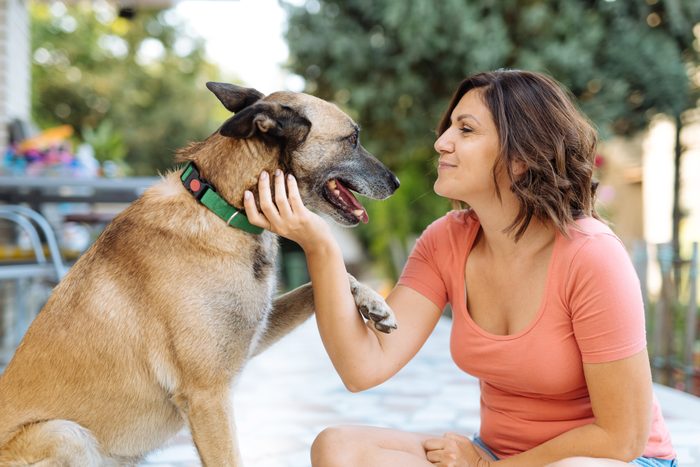
Hard-to-pronounce dog breeds
If you would love to know more about that Kooikerhondje at the dog park, but you don’t have the confidence to pronounce the breed correctly, you’re not alone. Dog breed pronunciation can be tricky. After all, some of the most popular dog breeds hail from foreign countries, and as beautiful as our favorite German dog breeds are, pronouncing dachshund is not that simple.
So, instead of taking a chance and mispronouncing the Italian dog breed at the vet, the hairless dog your neighbor walks or your friend’s big fluffy dog, gain confidence in your pronunciation first. We’ve rounded up a dozen tricky-to-say dog breeds, along with the correct pronunciation—and some fun facts too. And if all else fails, fall back on those nicknames, because “wiener dog” is here to stay.
Get Reader’s Digest’s Read Up newsletter for more dog insights, humor, cleaning, travel, tech and fun facts all week long.
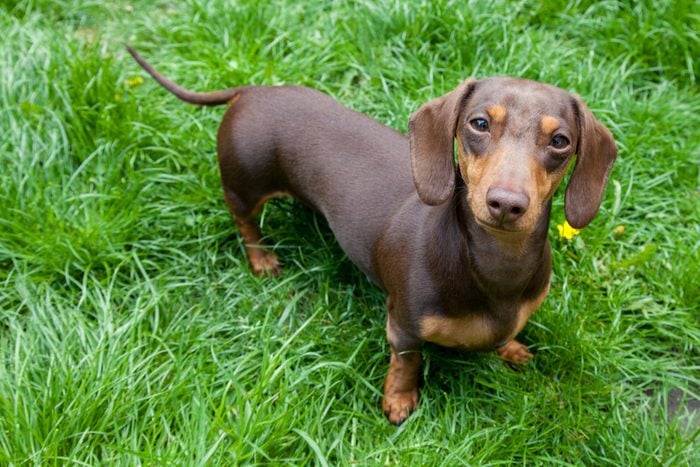
Dachshund
(DAX-hoont)
Eyes are going to roll when you tell a dachshund parent you think their “DASH-hound” is cute. The “dachshund” pronunciation is easy once you decipher the German phonetics. Dachs is pronounced “dax,” and hund is pronounced “hoont,” with a light emphasis on the “t.”
This cute short-legged dog breed hails from Germany and is famously known as a wiener dog or doxie. Their long bodies and short legs were originally used to dig and burrow their way down a badger hole to hunt badgers and other small critters. But today, you’re more likely to see them burrow under blankets to get cozy and warm.
Personality wise, they pack a punch. “Dachshunds tend to be courageous but also independent and belligerent,” says Don LeHoullier, DVM, veterinarian and owner of Countryside Veterinary Clinic in Jefferson, Oregon. “They are affectionate and cheerful but can also be possessive and often jealous.”
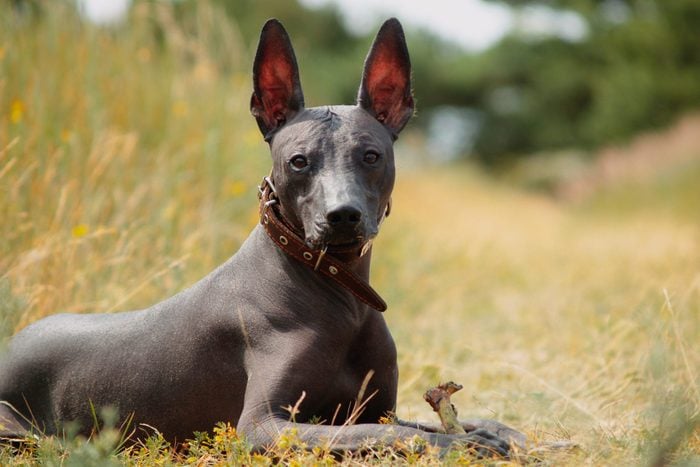
Xoloitzcuintli
(show-low-itz-QUEENT-lee)
Even if you master the “xoloitzcuintli” pronunciation, you probably won’t see this rare dog breed walking down the street. But if you do, the itz is pronounced “eats.” Luckily, this doggo has a fetching nickname that’s perfectly acceptable to say: xolo, pronounced “show-low.” The xolo is a popular dog breed in Mexico known for its temperament and signature hairless, hypoallergenic coat.
“A xoloitzcuintli is a goofy, playful breed that likes to be with their family,” says dog groomer Caitlin Wright, who has owned a xolo herself. Although they’re devoted to their family, xolos learn how to be sociable by interacting with humans and animals outside the family. They come in toy, miniature or standard sizes and are generally hairless, but some have coats. And while their lack of hair means sunscreen is a must with prolonged sun exposure, xolos don’t need a ton of products to keep their skin healthy. “I find they actually have more skin issues when more lotions and potions are used,” says Wright.
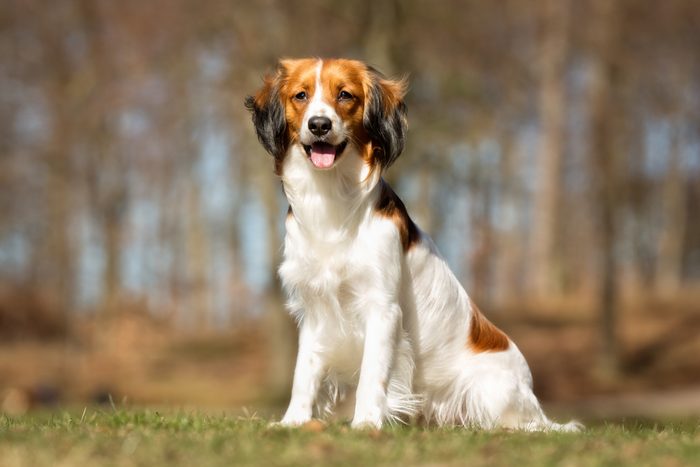
Kooikerhondje
(COY-ker-HUND-che)
The Nederlandse Kooikerhondje Club of the USA breaks down the “kooikerhondje” pronunciation so you can say it effortlessly: “koy-ker-hun-juh.” Practice it a few times and you’ll be able to say it with conviction. But if your mind goes blank, you can stick to their fun nickname: kooiker, pronounced “koy-ker.”
Similar dog breeds have similar markings, but this duck-hunting dog from the Netherlands has easily identifiable large, black-tipped ears that sharply contrast its reddish-orange and white coat. Friendly, lively, cheerful and easy to train, the kooiker is a sensitive and loving companion that weighs 20 to 30 pounds and is about 15 to 16 inches tall. And while many pure breeds have a genetic condition or two to be aware of (the kooiker has several), remember that it doesn’t always mean they’ll be diagnosed with something horrible. “Patella luxation, cataracts, Von Willebrand disease, epilepsy, polymyositis and hereditary necrotizing myelopathy can occur in this breed, but your veterinarian can screen for those,” says Amber Karwacki, DVM, a veterinarian at Heart+Paw in Philadelphia.
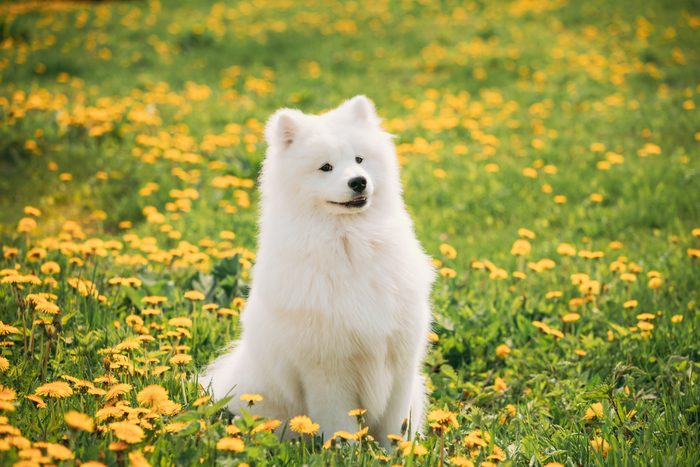
Samoyed
(sam-a-YED)
Don’t feel embarrassed if you’ve been saying the “Samoyed” pronunciation wrong. Many people say “sa-MOY-ed,” but according to the Samoyed Parent Club of America, you should say “sam-a-YED,” with an emphasis on the last syllable.
A super cute Russian dog breed named for the Samoyedic people of Siberia, it was bred for pulling and herding jobs in brutally frigid temperatures. Today, Samoyeds are adored for their plush, snowy white coat and that famously cute doggy smile. You’re likely to hear adoring fans call them “Sammy.”
“Energetic and active, Samoyed dogs are independent and calm,” says Dr. LeHoullier. “They are affectionate and gentle, but also need space and room to run.” Sammies grow 19 to 24 inches tall, weigh 35 to 65 pounds and shed a lot. They’re a talkative bunch and will let you know what they’re thinking—quick to join other Sammies in a good ol’ howling fest of melodic tunes.
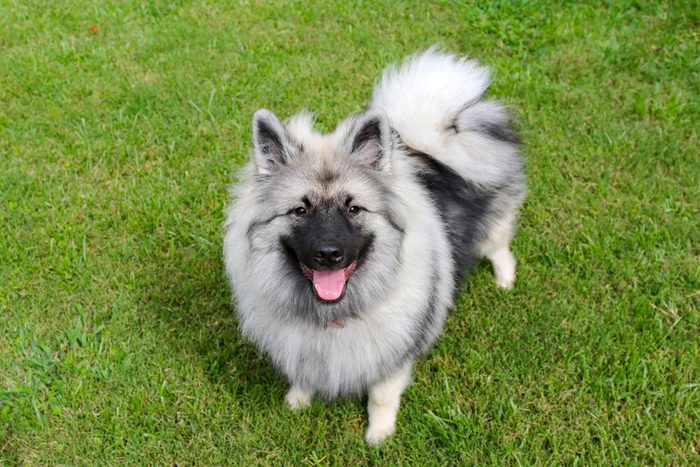
Keeshond
(KAYZ-hawnd)
It would be a lot easier to call this Holland breed by its original moniker—the Dutch Barge Dog—but this cutie is worthy of learning the “keeshond” pronunciation. Kees is actually pronounced as “kays,” and hond is pronounced “hund” with a soft “d.”
Weighing 35 to 45 pounds, these dog breeds look like teddy bears and are perfect for snuggling. You would be hard-pressed to find a more gentle and devoted family dog, but there’s something you should know about their coveted fluffy coat: “Their hair is crazier than Trent from Ted Lasso,” says Matthew McCarthy, DVM, a veterinarian and founder of Juniper Valley Animal Hospital in Queens, New York.
“The keeshond is a double-coated breed with a thick, pale gray, wooly undercoat that is intermixed with a longer gray-black guard coat with black tips.” Twice a year they completely “blow out” their undercoats, a shedding process that can equate to about three weeks of vacuuming dog hair.
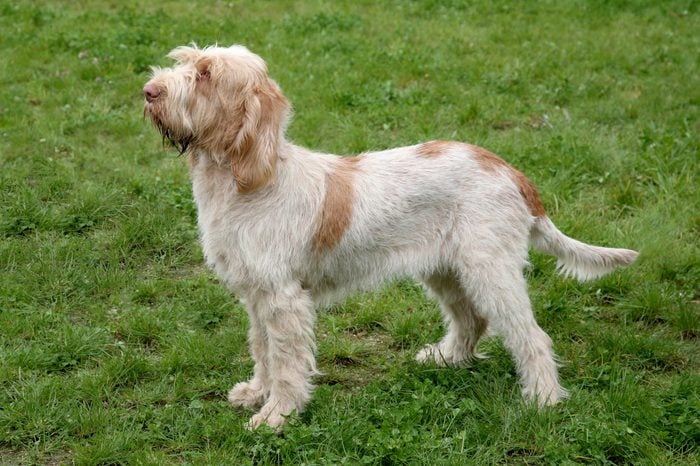
Spinone Italiano
(spin-OH-nay Ih-tahl-YAH-no)
The first half of this dog breed name is tricky, but the second half is a breeze. The “spinone” pronunciation is “spin-OH-nay.” In the 19th century, this breed was known as the Bracco Spinoso. Bracco is Italian for “hound,” and spinoso means “pino,” a thorny shrub in the Piedmont region where the game would hide. You’ll recognize them by their stiff hair that forms distinguished-looking eyebrows, mustaches and beards.
“Due to their hunting instincts, Spinones are a relatively quiet breed and do not bark unless provoked,” says Dr. McCarthy. “At their vet visits, they are a joy to examine. And while they do need a fair amount of exercise, they are generally considered a low-maintenance breed.” The Spinone’s all-terrain, muscular body weighs 60 to 85 pounds, and those adorable large feet keep their 22- to 27-inch-tall frame steady.
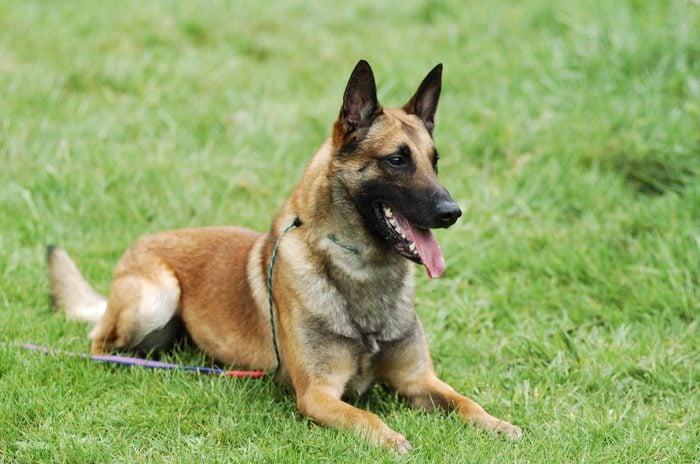
Belgian malinois
(mal-un-WAH)
The second half of the name of this Belgian guard dog breed tends to be botched, as many mistakenly rhyme “malinois” with “Illinois.” However, the ois is pronounced “wah.” Often called the “mal,” this extremely intelligent and athletic dog excels in obedience, tracking and agility and is often seen working as a police dog and military dog. The mal is the ideal partner for the pet parent who loves the outdoors and is looking for a running, hiking or biking partner. Mals are lean and muscular, weigh 40 to 80 pounds and stand 22 to 26 inches tall.
And you won’t find mals loafing on the sofa. “Belgians are dogs for experienced, dedicated owners,” says Dr. McCarthy. “It’s one of those ‘not a pet but a lifestyle’ dogs. They are absolutely not the right dog for everyone, as they tend to be a lot of work with a need for intense daily physical and mental exercise, as well as lots of appropriately managed socialization.”
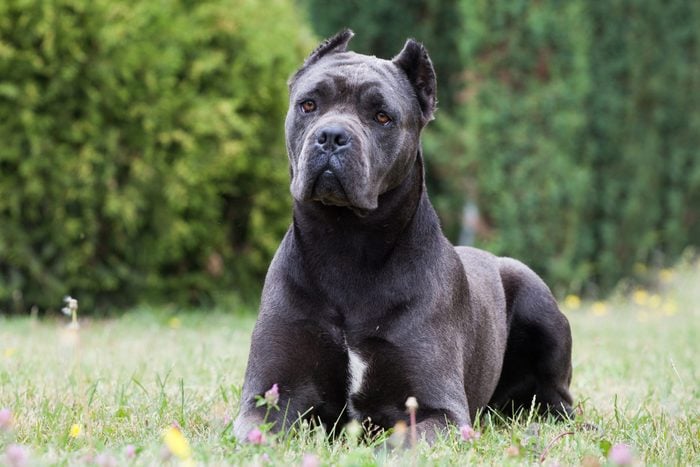
Cane corso
(KAH-nay KOR-so)
The first half of the “cane corso” pronunciation surprises you. Cane should sound like a candy cane, but it doesn’t. The Italian word for dog is cane, but it isn’t spoken the way it looks, so it sounds like “ka-nay.” Corso stems from the Latin word cohors, meaning guardian or protector.
“Cane corsos were developed as watch dogs and hunters of dangerous game, such as wild boar,” says Dr. McCarthy. “Bearing in mind that these may not exactly be the desired attributes of a laid-back family dog, be prepared for some rigorous training and socialization early on.” Hint: That means avoiding these puppy training mistakes. Here’s our list of the easiest dogs to train.
Remember that these guys can easily hit the 160-pound mark (and stand upward of 28 inches), so you better have a good handle on your pup’s temperament. They might not love everyone (and every critter) they meet, but they will be intensely loyal and very protective of their human family and may even think they are the head of the family, so a firm and loving hand is essential.
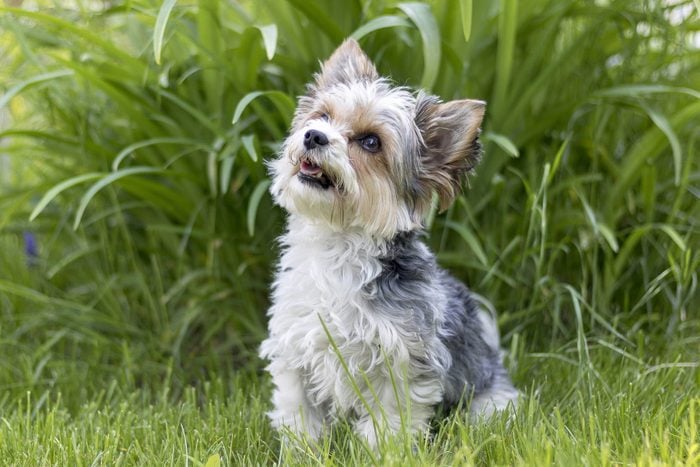
Biewer terrier
(bee-VAH)
Surprise! “Biewer” is pronounced the same as “beaver.” But don’t be hard on yourself if you’ve been saying “bye-were.” After all, it’s not exactly common knowledge that the namesake came directly from the surname of dog breeders Gertrud and Werner Biewer from Germany. This super cute pup came to be when the Biewer’s Yorkshire terrier had tri-colored (black, white and tan) puppies—not the norm for a Yorkie. An extremely rare piebald gene was responsible, and we couldn’t be happier about it.
“The Biewer terrier is an affectionate dog breed that wants to spend time with the family and is good with kids,” says Dr. Karwacki, but these calm dogs spread their love beyond the family zone. Their fun-loving, childlike and mischievous demeanor is imparted to everyone they meet, including other animals. These lap-loving and portable whippersnappers are just 4 to 8 pounds and 7 to 11 inches tall.
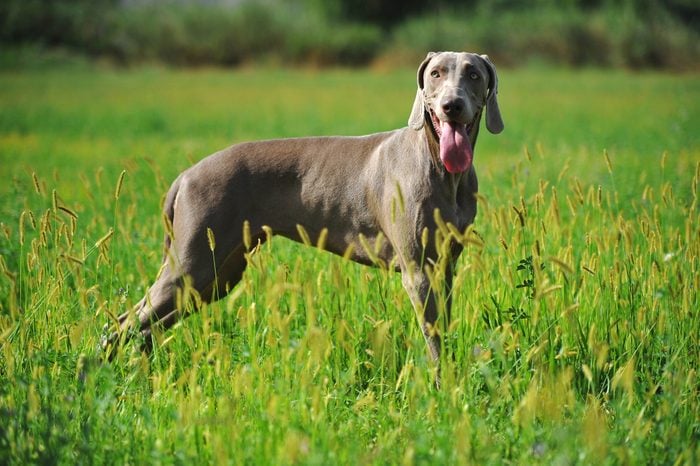
Weimaraner
(VAHY-muh-rah-ner)
Even with the “weimaraner” pronunciation spelled out, it still doesn’t come naturally to say. Here’s a tip: Say “y-mar-honor.” It rolls off the tongue! Nicknamed “the gray ghost” for their stealthy and catlike hunting style, sleek silver-gray coat and eerily cool blue-gray eyes, this German dog breed exudes an elegant and posh vibe, standing 23 to 27 inches tall and weighing 55 to 90 pounds.
The weimaraner is a natural athlete and one of the fastest dog breeds in the world. It craves activities and jobs to do. One of those jobs is utilizing their powerful sense of smell, which is so good, it rivals a bloodhound. They show off their skill set in contests or tracking missing persons. And although weimaraners enjoy staying busy, they tone their energy level way down at night and are content to simply snuggle on the sofa. As a loyal dog breed, they are devoted and protective of their family. “They have a strong disposition toward guarding and defending and make a good companion,” says Dr. LeHoullier.
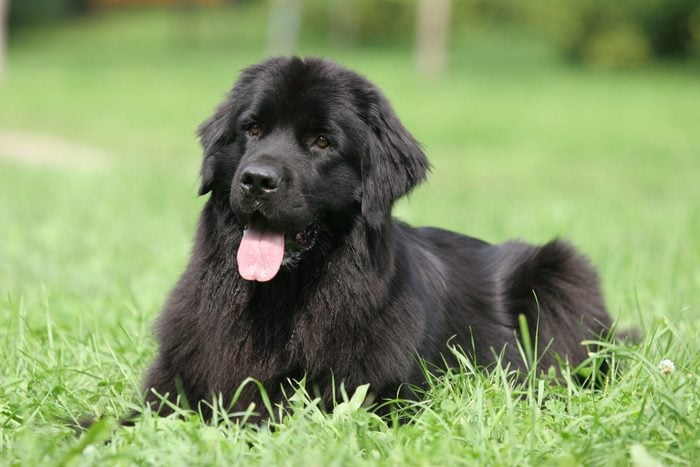
Newfoundland
(NOO-FIN-land)
It is the least complicated spelling on our list, but people still get the pronunciation wrong. The easiest way to remember how to pronounce “Newfoundland” is to rhyme it with “understand.” Although it appears to be three syllables, local Newfoundlanders keep it to two and say “newfin-land.”
Named for the most easterly province of Canada, this gentle and giant dog breed has the intimidating size and strength of a guard dog, yet is also an exceptionally gentle and lovable playmate. Considered a nanny dog, it’s also a protector of children. Often dubbed “newfie,” they stand 26 to 28 inches tall and weigh a hefty 100 to 150 pounds.
“As opposed to other giant breeds that take two years plus to get to their full size, newfies are very fast-growing pups in their first year of life,” says Dr. McCarthy. That means proper attention should be paid to their nutrition and exercise levels from the start. Not sure where to start? This heavily coated dog was actually bred to swim. Thanks to their large webbed feet, vast lung capacity and strong hindquarters, they can doggy paddle—and rescue people.
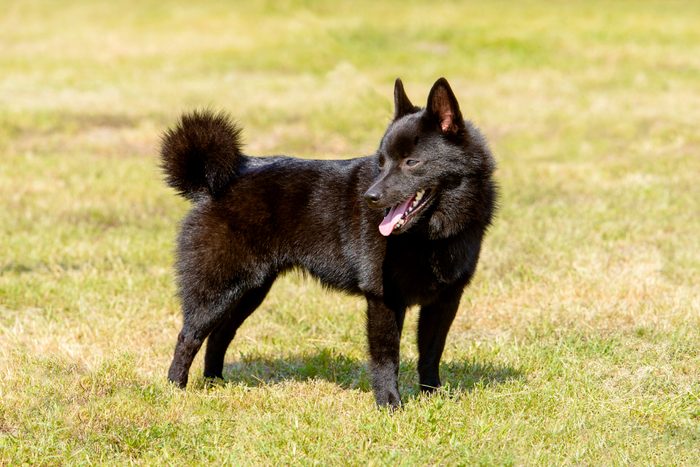
Schipperke
(SHEEP-er-ker)
You may have heard schipperke parents, veterinarians and even dog show hosts call this pint-size black sheepdog “SKIP-er-key,” and that is perfectly acceptable, according to the Schipperke Club of America. But if you want to impress your fellow dog lovers, the authentic “schipperke” pronunciation is “SHEEP-er-ker,” which comes from the Dutch-speaking part of northern Belgium.
“This breed originated from Belgium and was the most popular guard dog in that country,” says Dr. LeHoullier. “They are cheerful, seemingly tireless and constantly alert.” Those attributes came in handy working as canal boat dogs, where their job was to hunt vermin. Even though they’re more faithful watch dogs than guard dogs today, they still retain the confident and independent personality of a guard dog. They are standoffish with strangers but very loyal and gentle with their human family. One of the smartest dog breeds in the world, these little nuggets grow 10 to 13 inches tall and weigh 10 to 16 pounds.
About the experts
- Don LeHoullier, DVM, is a veterinarian and the owner of Countryside Veterinary Clinic in Jefferson, Oregon.
- Caitlin Wright is a registered professional pet stylist with the National Dog Groomers Association of America with seven years of experience. Caitlin frequently attends educational seminars and grooming competitions and specializes in breed standard grooms, Asian fusion style, senior pets and large breeds, as well as creative grooming at Heart+Paw in Fells Point, Maryland.
- Matthew McCarthy, DVM, is a veterinarian and the founder and veterinary medical director at Juniper Valley Animal Hospital in Middle Village, New York.
- Amber Karwacki, DVM, is a veterinarian and a member of the American Veterinary Medical Association, New Jersey Veterinary Medical Association and Pennsylvania Veterinary Medical Association. She is a partner doctor at Heart+Paw in Philadelphia.
Sources:
- Nederlandse Kooikerhondje Club of the United States of America: “About the Breed”
- Samoyed Club of America: “The Samoyed”
If you’re planning to pick a furbaby for yourself, don’t forget to check out brindle dog breeds, handsome Italian dog breeds, dogs that look like mops, dogs with beards and elegant French dog breeds.
